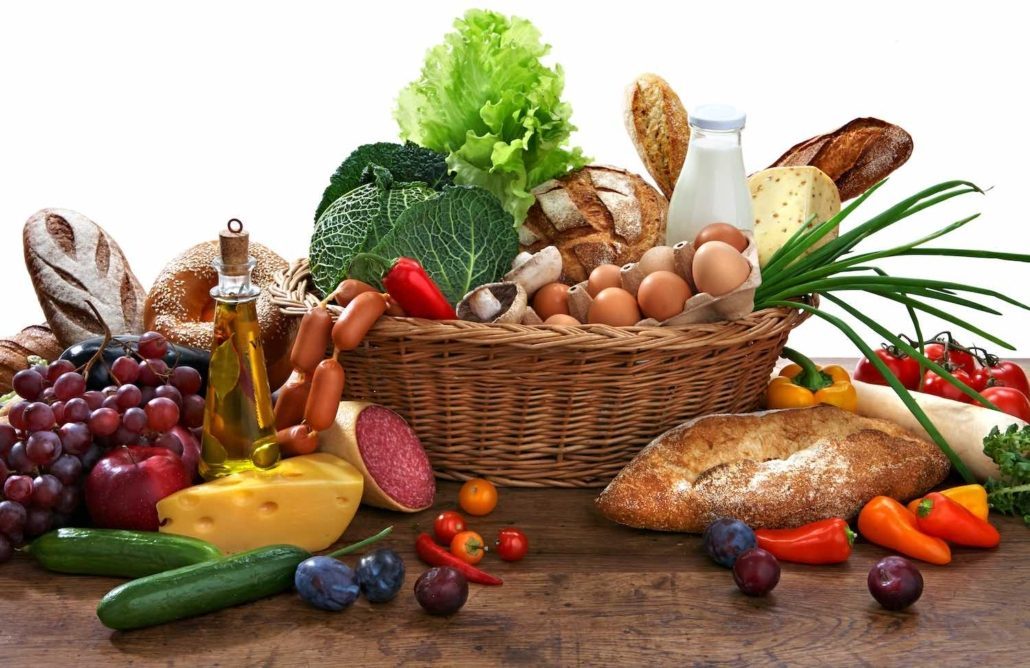COMPARING APPLES & ORANGES
Eating nutrient-rich food while saving a penny or two
Words by Laura Leavitt
***
These days, going to the grocery store can leave you feeling weary. Prices on several key items have increased, and families in the Asheville area face the many trade-offs that come with inflation, supply chain challenges and escalating prices for so many other things. It can feel like one has to sacrifice nutritional value to make ends meet.
In spite of these challenges, there are still plenty of things in your control as a grocery shopper, home cook and eater in Asheville. When affordability and nutrition are top priorities, you still have options to create new habits and take advantage of the resources around you to feed yourself and those you love.
1.) Planning Ahead
When food is expensive, the first place to look is at food waste: What gets scraped away after the meal? Starting to track what food makes for delicious leftovers and what food gets thrown away is a good idea.
“Wasted food is the most expensive food,” says Julia Costa, community health manager of nutrition outreach at YMCA of Western North Carolina. “Try to get creative with items that you find challenging to cook with. Find recipes to help you utilize your broccoli stems, carrot tops and chicken bones. Try to be mindful of preparing quantities you know will be consumed, or which can be frozen to eat at another time.”
Keeping an eye on what gets thrown out because it has expired can help you tweak your shopping habits and recipes. Similarly, making menu plans and detailed shopping lists before heading to the store helps to minimize unnecessary purchases that lead to waste.
“Starting with a general plan can help keep shopping affordable— and also healthy!” says Sarah Hart, communications manager for local nonprofit Appalachian Sustainable Agriculture Project (ASAP). “Shopping at farmers markets and farm stands really encourages cooking for yourself or your family—which is almost always going to be more nutritious than eating out and relying on convenience or prepared foods.”
2.) Use All Your Options
Many of us envision nutritious meals as being full of fresh greens and fruit, and those things are indeed packed with nutrients. However, many preserved, canned and frozen foods are also highly nutritious and easy to salvage without risk of going bad in the fridge.
“Canned vegetables, fruits and proteins like beans and meats are packaged in such a way as to preserve the food item’s nutritional value,” says Lindsey Casiano, a registered dietitian whose practice is called Nutritious Thoughts. “Canned food items have a long shelf life, thus reducing the amount of food we are throwing away.”
These foods broaden your options at the grocery store, where you can compare prices, including sale items, alternatives and private labels.
“Always check the unit price that’s on the shelf tag. It’s easy to be fooled by packaging, and comparing similar products by unit price will help you save,” explains Leah McGrath, corporate dietitian for Ingles Markets. “It’s important to set aside any sort of loyalty to specific brands and try items that are on sale or store brands.”

3.) Create Large Batches
Many of us have such busy lives that we have to figure out a convenient way to eat on busy days even if we’re prioritizing affordable, nutritious meals. Michelle Shelfer, a registered dietitian and owner of WNC Nutrition Counseling and Services, points out that bulk cooking saves time and money at the grocery store, helping you to create the effect of convenience foods without the price tag.
“Batch cook and enjoy leftovers in different forms. For instance, grill a large amount of meat on a Sunday and use it for different meals until Wednesday. Then on Wednesday, for example, repeat, grilling a different thawed meat protein, or use beans or tofu. Pair with your batched starch and veggie,” says Shelfer.
She suggests batch cooking starches like root vegetables or quinoa and roasting the vegetables that are on sale that week for an economical way to cook while still enjoying some variety. Each meal isn’t just the exact same meat, veggie and starch. You can further switch it up with different sauces or spices. The best part? It’s faster than any takeout or drive-thru food will ever be on your busy weekdays.
4.) Use Community Resources
If your income isn’t keeping up with price increases and you feel like you’re making big trade-offs just to get nutritious food in your diet, the WNC community has resources available to help. From individuals to families, we all need nutrients in our diets to help us develop and have the necessary energy for our busy lives.
ASAP has programs specifically designed to get farm-fresh produce into the hands of those with a smaller food budget. Their Double SNAP for Fruits and Vegetables program allows people to shop with their SNAP dollars at farmers markets, and also gives them a dollar-for-dollar match, helping them buy twice as much produce for the same SNAP dollars.
If diet plays a role in addressing a health concern in your family, you might also qualify for another key ASAP program. “With ASAP’s Farm Fresh Produce Prescription, healthcare providers can prescribe patients more fresh fruits and vegetables to help treat or prevent diet-related illness,” explains Hart. “Patients redeem the prescription at a participating farmers market. These programs help make fresh, local food more accessible to everyone in our community—and also support local farms by expanding the customer base at farmers markets.”
Another resource for families working to solve the nutrition and affordability puzzle? The YMCA of Western North Carolina offers mobile food markets in five counties. You can find the schedule on their website.
“Our markets offer free fresh produce, meat and eggs to anyone in the public who attends,” says Costa. “If you have Medicaid Managed Care, you may qualify for food services at no cost to you, including weekly food boxes and medically tailored meals delivered to your home through a new statewide initiative called the Healthy Opportunities Pilot.”
If you plan and use resources from a food market, food pantry or nutrition program, you can stretch your grocery budget further and use the cash you save for special items that round out your meals.
Recognizing when affordable nutrition may be out of your budget’s reach is key to getting some help. Programs that provide nutritious food for free or reduced cost are part of how we sustain each other as a community.
5.) Prioritizing Nutrition
Asheville is a haven of excellent flavors, farm-fresh ingredients and culinary innovation. However, from a basic breakfast to a nourishing dinner with family, some of the most important meals we eat are the everyday meals that sustain our everyday lives. Planning ahead, batch cooking and shopping all options for deals is a great way to make these meals both more affordable and nutritious. These strategies are also quite sustainable, creating less food waste and helping us use resources more responsibly.
When even those strategies don’t quite make ends meet, reach out to organizations like MANNA Food Bank, ASAP and YMCA of WNC to learn more about programs that can help you supplement your diet in more nutritious ways.
Laura Leavitt is a writer who savors the dazzling mountain vistas out her window each day. She can usually be found sampling some of the incredible food available here in Asheville.
Save
Save
Save
Save
Save
Save
Save
Save
Save
Save

Julia Costa of YMCA of Western North Carolina

Sarah Hart of the Appalachian Sustainable Agriculture Project

Michelle Shelfer of WNC Nutrition Counseling

Lindsey Casiano of Nutritious Thoughts
THE WEEKLY REVEL
Sign up for your free handpicked guide to enjoying life around Asheville.
Available weekly from May to October.





